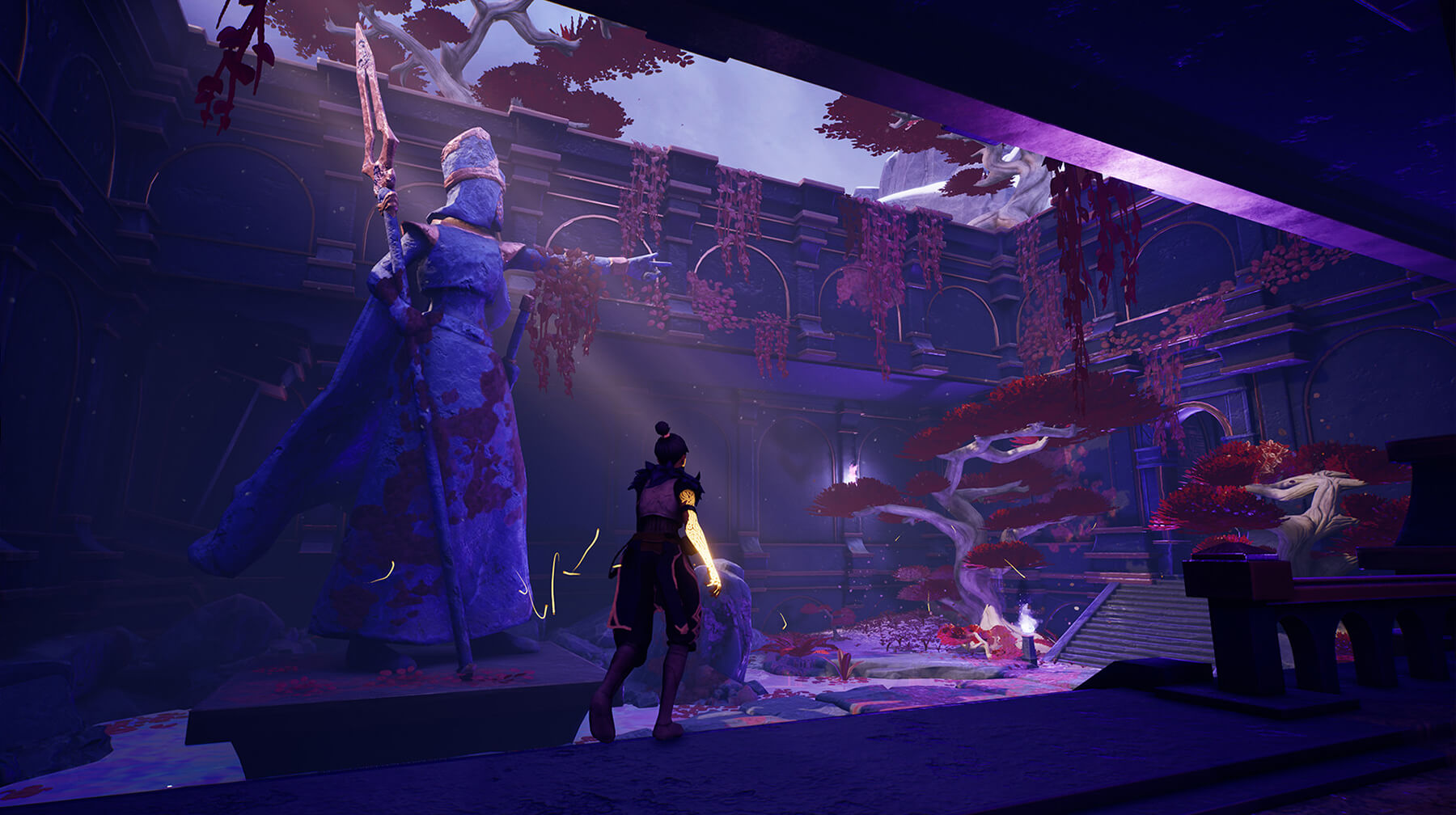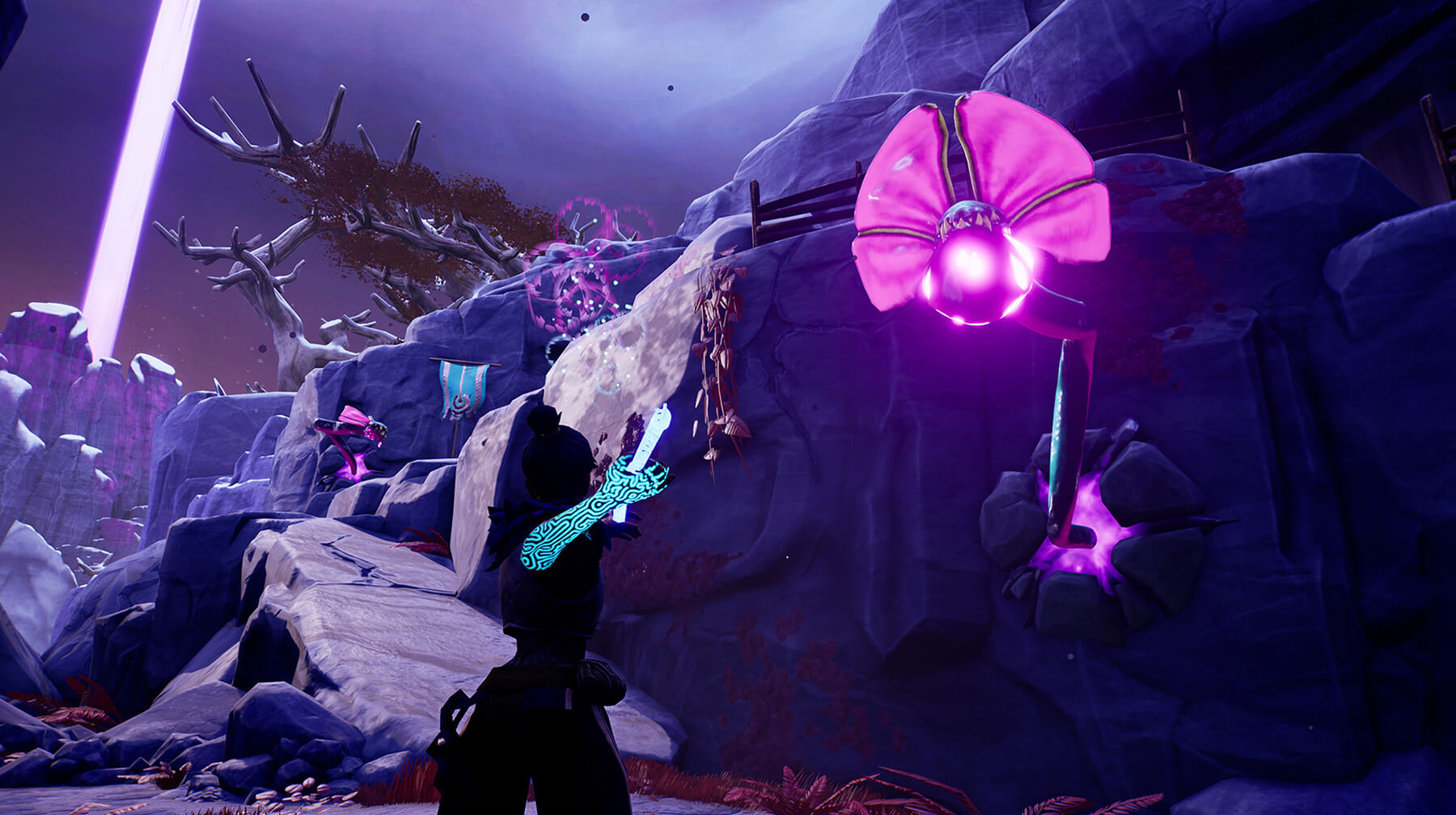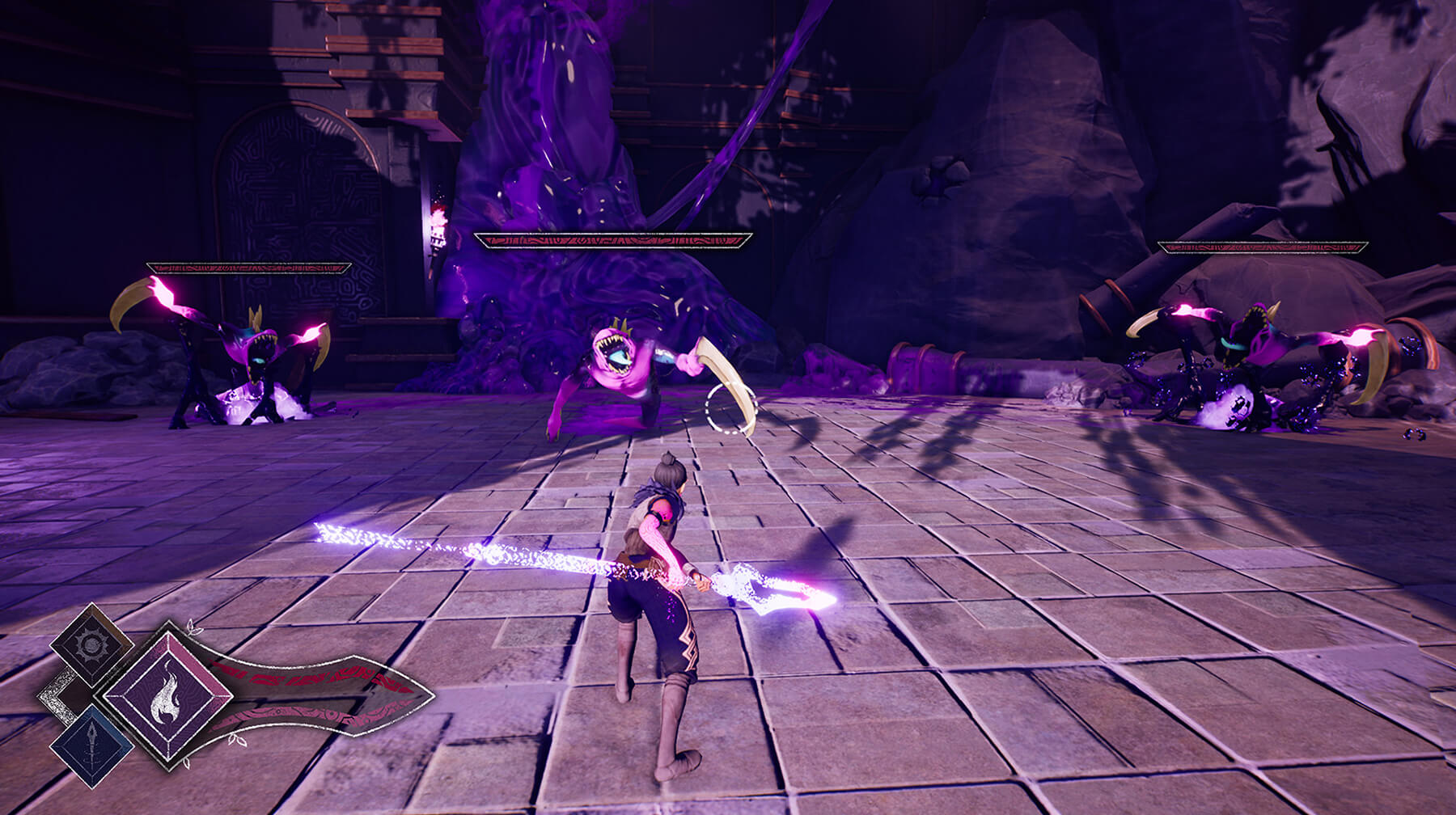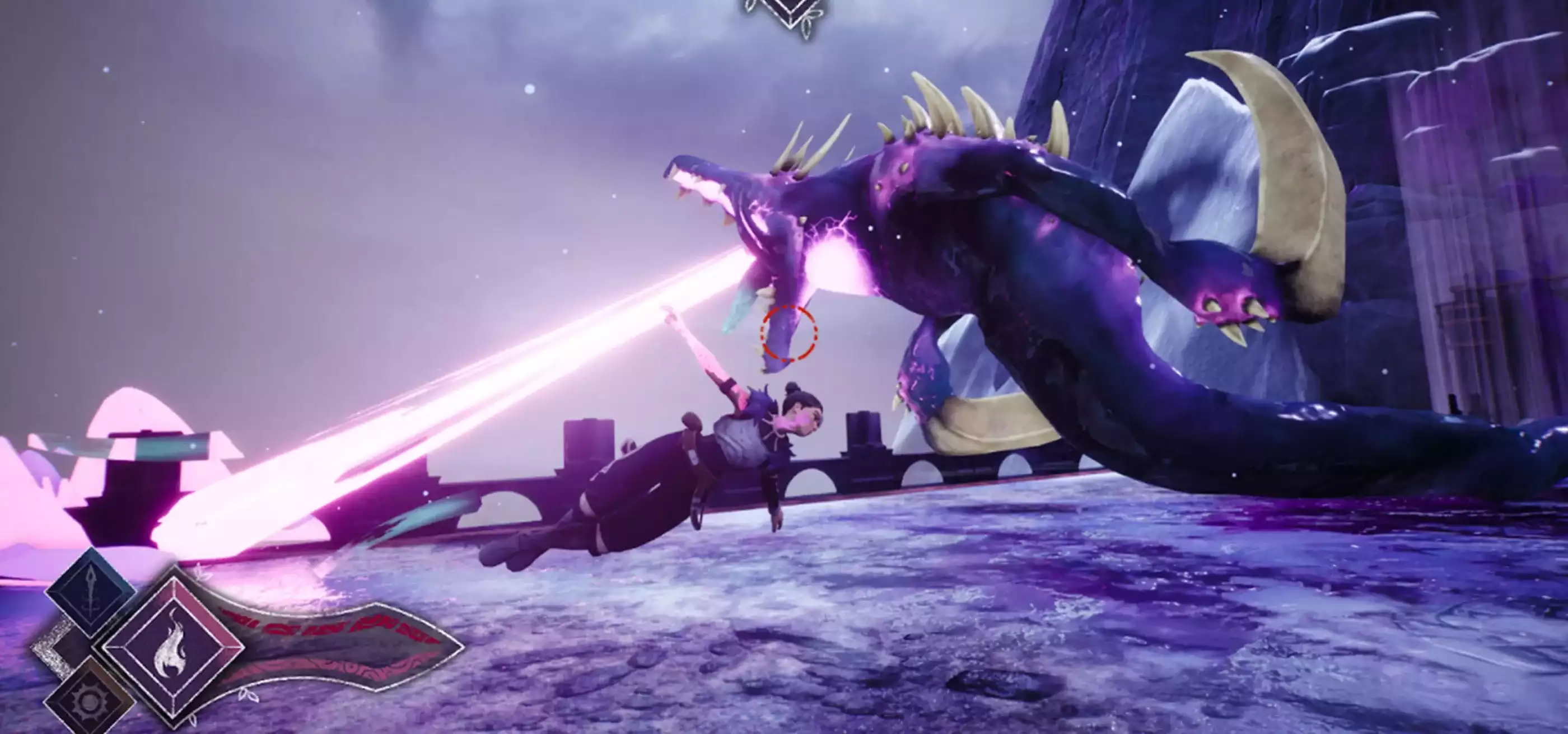In DigiPen’s third-person action game Cyrah’s Ascent, the student project’s eponymous hero must use her magical powers to battle to the top of a mountain. Appropriately enough, Coffee Break, the team behind the project, used their own magical powers to ascend to the top of the 2021 Rookie Awards, the world’s largest contest for young creatives working in digital media. Amid formidable international competition, Cyrah’s Ascent landed a coveted finalist spot in the Game of the Year category, as well as a finalist nomination in 3D animation and concept art for Coffee Break art lead and BFA in Digital Art and Animation graduate Ashley Rosenbaum. “It really helped me take a step back and look at the beauty of what we had created together,” Rosenbaum says. “It was such an honor to receive high marks like that during The Rookie Awards, and I’m so proud of what we did.”

Coffee Break does indeed have lots to be proud of. The 27-student team banded together to craft an impressive, mystical world cast in striking hues of purple and pink, corrupted by a bestial force known as the Laust. Players guide Cyrah, a warrior imbued with magical “Essence,” as she sets out to avenge the people of her village and defeat the source of the corruption. “We designed the game so that wherever you are in the world, you can look around and ideally be given narrative information through the environment,” says Coffee Break environment lead and BFA in Digital Art and Animation graduate Trevin Dahl. “The evolution of color, weather, and lighting help guide the mood of the game as the player progresses towards the origin of this world’s corruption.”
In designing the game’s distinct setting, the team pulled visual references from many different real-world cultures across various time-periods. “However, we didn’t want to focus on one culture as reference, but wanted to create our own world,” Rosenbaum says. The look of Cyrah herself, including her prominent arm tattoos, was inspired by a blend of historical warrior cultures. “[We made] her tattoos completely visible for the story element but also as a UI element for her abilities,” Rosenbaum says. Depending on which of her three magical attacks the player has selected, Cyrah’s tattoo sleeve glows a different color.

Those magical attacks actually began as something completely different when development was first starting. “At the time, we were playing around with some third-person shooter mechanics,” says Coffee Break design lead and BA in Game Design graduate Matt Longcore. “Ultimately, we kept the fantasy environment that the art team had been working on and reimagined the shooter mechanics to be fantasy spells.” Refining the game’s snappy combat system, which combines those ranged spells with melee attacks and a dash ability, was a core focus for the design team throughout the dev process. “Combat was something that was constantly iterated on, and it really didn’t feel locked in and fluid until we were almost done with the project,” says Coffee Break tech lead and BS in Computer Science and Digital Audio graduate Bennett Ewanchyna.
Early ideas for mechanics, like slowing time and teleportation, didn’t end up meshing the way the team hoped. Melee, which ended up being a central part of the final combat system, wasn’t actually implemented until near the end of development. “Each iteration was meant to push the game more towards the fun,” says Coffee Break creative director and BA in Game Design graduate Grant Campbell. “We had to answer a lot of questions that came from testing.”

One question that quickly arose was enemy difficulty, and exactly how tough the Laust should be. “It was crucial for the enemies to be able to put pressure on the player while also giving them moments to breathe,” Campbell says. The team decided to focus on finding that initial balance with their most basic enemy type, the Reaper, and expanding their cast of foes from there to fill in combat gaps. “There were a lot of different spell variations that we went through, ultimately settling for the ones that made the most sense with the different enemy types,” Ewanchyna says. “We wanted to make sure that each attack had a purpose.”
Given its high level of polish, it’s no surprise that Cyrah’s Ascent took two years for Coffee Break to develop, a period that saw the team’s original size nearly double. “My biggest takeaway from working on Cyrah’s Ascent was how different working on even a slightly larger team would get,” says Coffee Break co-producer and BFA in Digital Art and Animation graduate Christopher Pang. “As more people joined the team, it became more apparent that some practices that worked with a team of 15 people were less effective.”
More voices in decision making made finding a middle ground difficult at times, something Coffee Break eventually worked through. “The entire team was really committed to hearing each other out, weighing pros and cons of different ideas and communicating effectively,” says Longcore. Balancing lengthier group meetings with hands-on production time was also a challenge, but shifting the team’s organizational structure helped steer things back on track. “Managing tasks and progress became extremely vital, and it required us to make separate sub-departments with various leads to keep pipelines going, similar to an actual studio in the industry,” says Rosenbaum.
In the end, a lot the solutions to Coffee Break’s growing pains simply came from dedication and kindness. “Despite all the challenges and setbacks we faced, everyone still put in their best when it came to the project and looking out for each other,” Pang says. “It was truly inspiring to see teammates actively seek out ways to help each other even when things were difficult.”
We became like a family working on this project.
Even still, learning how to ask for that help proved a major takeaway for many on the team. “Going into the making of Cyrah’s Ascent, I put so much stress on myself,” Rosenbaum says. “It took me a while. Not being afraid to reach out for help was hard, but important. Stay humble, take initiative when you can, but don’t be afraid to ask for help.”
Beyond the impressive polish it afforded, Coffee Break’s big team size also made for some big comradery. “We became like a family working on this project, which is the greatest achievement in my eyes,” Ewanchyna says. “Seeing the project do so well at The Rookies Awards was such an incredible moment for all of us. We put our blood, sweat, and tears, literally, into this project, and it was so rewarding to see that The Rookie Awards saw something special in our game.”
Those two-years of development time meant lots of room to grow, something Coffee Break are taking with them into the industry. “I consistently felt that I was working with reliable peers dedicated to mastering their respective crafts,” Campbell says. “I look forward to any chance to work with them again throughout my career.”
